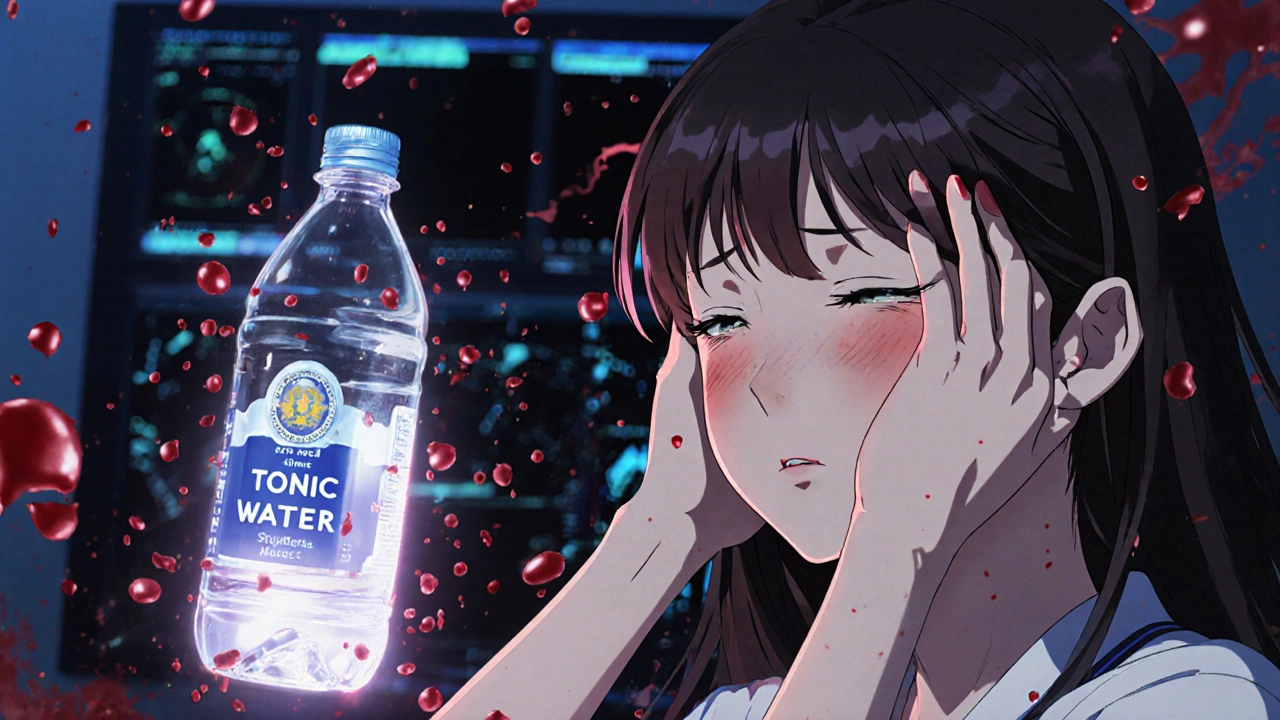
Drug-induced thrombotic thrombocytopenic purpura (TTP) is a rare but deadly reaction to certain medications like quinine, clopidogrel, and cyclosporine. Learn the warning signs, which drugs are most dangerous, and what to do if you suspect TTP.
When your blood starts forming clots where it shouldn’t — inside tiny vessels instead of at a cut — you could be facing thrombotic thrombocytopenic purpura, a rare, life-threatening blood disorder that triggers widespread microclots and drops platelet levels. Also known as TTP, this condition doesn’t just cause bruising; it can shut down organs like the kidneys and brain if left untreated. It’s not something you get from a virus or poor diet. TTP happens when your body lacks enough of a protein called ADAMTS13, which normally breaks down large clotting molecules. Without it, these molecules pile up, stick to platelets, and form clots everywhere — using up your platelets until you’re at risk of bleeding.
This is where things get urgent. Low platelets mean you bruise easily, develop tiny red dots under the skin, or bleed from the gums. But TTP isn’t just about bruises. It can cause headaches, confusion, seizures, or even stroke-like symptoms because those clots are blocking blood flow to your brain. Kidneys get damaged too — you might notice less urine or dark, tea-colored pee. Fever and fatigue often show up as well. These five signs — low platelets, clots, neurological issues, kidney trouble, and fever — are the classic signs doctors look for. It’s rare, yes, but when it hits, it hits fast. And it’s not something you can treat with rest or supplements. Plasma exchange is the standard first step — replacing your plasma with donor plasma to restore the missing enzyme. In some cases, new drugs like caplacizumab or eculizumab are used to block the clotting process directly.
What you’ll find in the posts below aren’t general overviews. These are real, practical guides from people who’ve dealt with blood disorders, clotting risks, and medication management. You’ll read about how blood thinners like warfarin interact with herbal supplements, why certain drugs can trigger dangerous reactions, and how to monitor your body when you’re on treatments that affect your blood. Some posts talk about how medications like those used for HIV or tuberculosis can have hidden effects on your clotting system. Others explain how to spot warning signs early — because with TTP, time isn’t just important, it’s everything. There’s no room for guesswork here. What you learn here could help you ask the right questions, recognize danger signs, or understand why your doctor ordered a specific test.

Drug-induced thrombotic thrombocytopenic purpura (TTP) is a rare but deadly reaction to certain medications like quinine, clopidogrel, and cyclosporine. Learn the warning signs, which drugs are most dangerous, and what to do if you suspect TTP.